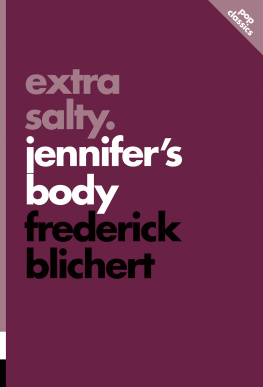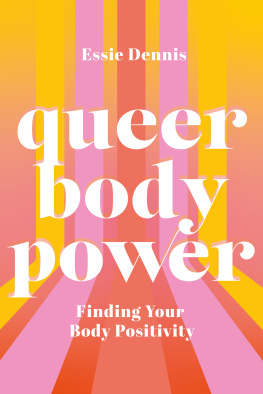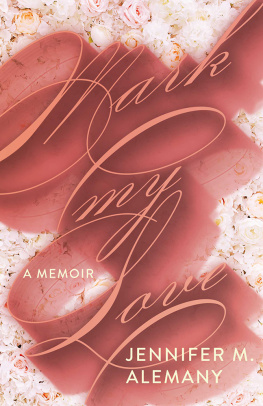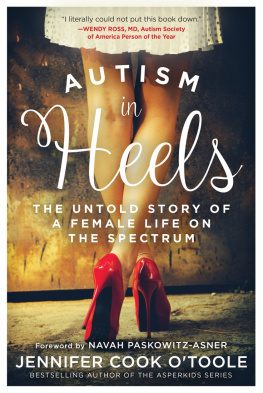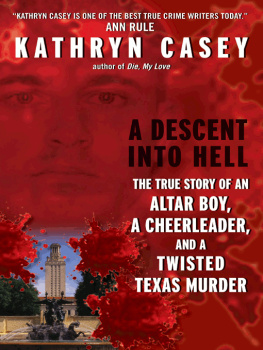Introduction
Welcome to Devils Kettle
I didnt rush to the multiplex to see Jennifers Body when it came out in 2009. The premise seemed fun enough a popular teen girl gets possessed by a demon and wreaks havoc on her small Midwestern town as her best friend tries to stop her but trailers werent exactly tantalizing (or accurate), and reviews were as damned as Jennifer herself. But browsing one night at my local video store, I took a chance.
And what a treat! Why did people sleep on this? Jennifers Body was hilarious, touching, dark as hell, and way queerer than I was used to for a mainstream movie that wasnt about queerness. I thought it was pretty good, I would tell anyone who wrote it off. Have you seen her in Jennifers Body? Id ask anyone critical of the films star, Megan Fox. And it seriously stuck with me. Over the next few years, I fell in love with horror, grew critical of how Hollywood treats women, and embraced my own queerness, and so Jennifers Body spoke to me more and more as time went on. Every passing year saw me just a little more baffled at how little love it had gotten.
So many mid-budget horror films aimed at teens and starring the ingenue-du-jour fall flat, but Jennifers Body is an emotionally satisfying look at female friendship, queer love, and gendered violence, all wrapped up in a package thats infused with horror film history. The film stands alone, but has notes of everything from Carrie to An American Werewolf in London to The Lost Boys to Ginger Snaps.
It takes a deft hand to balance humor and horror without sacrificing one or the other; the film walks that line expertly, finding the funny even in heartbreaking moments of violence between Foxs titular Jennifer Check and her best friend, Anita Needy Lesnicki, played by Amanda Seyfried, who wants to save the girl she loves and all the innocents her BFF keeps ingesting too.
That Jennifers Body is good great, even has everything and nothing to do with its failure. Taste is a funny thing, and its inextricably linked to cultural contexts. Can quality be measured objectively? Is a film inherently good or bad and then subject to whether people respond appropriately to it? Whether they get it? Can art truly be produced before its time and waiting for us all to catch up?
I remember watching it and thinking it was terrific. It was a really strong voice by a strong director. Smart, sharp characters. I liked the whole satanic possession by accident. It was just a smart, clever film. Basically smarter than most of the stuff I was seeing, Toronto International Film Festival (TIFF) programmer Colin Geddes told me of his decision to program Jennifers Body as part of Midnight Madness, the festivals genre-centric and fan-favorite midnight screening series, in 2009. He managed to appreciate a good film in the moment, and the premiere audience, who hung around for a Q&A at two a.m., seemed to agree.
So, what went wrong? Why, when Jennifers Body moved into wide release, was it met with so little enthusiasm? Overlapping backlashes against screenwriter Diablo Cody and Megan Fox set it back from the get-go. Cody, a young stripper-turned-blogger-turned-screenwriter, was hot off her screenwriting Oscar win for sleeper hit Juno, which faced major pushback from conservatives and progressives alike almost overnight. Fox, meanwhile, got herself fired (or did she quit?) from Michael Bays megahit Transformers franchise shortly after a public feud that coincided perfectly with the Jennifers Body rollout. Those two separate pushbacks against Cody and Fox were among the many signs of an industry disturbingly primed to tear down the young women whose talents it chews up like Jennifer does a barbecue chicken.
But Hollywood has faced a dramatic reckoning since Jennifers Body bombed at the box office. In 2017, after the New York Times published allegations of decades of sexual abuse by Harvey Weinstein, women, in Hollywood and beyond, flooded the internet with their own terrible #MeToo tales. The boys club mentality of the film industry has also come under fire in the years since 2009, with film festivals making commitments to reach gender parity among the directors on their programming slates. The Jennifers Body writer/director team of Diablo Cody and Karyn Kusama certainly stood out in 2009, especially in the male-dominated horror genre, but not enough to genuinely make it into the press cycle the way 50/50 initiatives have since. If anything, a female creative team may have still been seen as a liability rather than a mark of progress.
In contrast, ten years later, a reimagining of 1974s prototypical slasher classic Black Christmas, directed by Sophia Takal and written by Takal and April Wolfe, became a bit of a flashpoint for discussions of women in horror, with the Los Angeles Times calling it a fiercely feminist slasher movie for the #MeToo era. As I watched this movement make its way to horror films, I thought back to Jennifers Body: a story now tapped into the zeitgeist, with one character assaulted but finding agency in her newfound monstrosity and the other fighting to save someone she loves deeply.
Jennifers Body grounds itself (and its more outrageous moments of supernatural fiction) in recognizable slices of teen life and the horrors of systemic misogyny in a way that gives it staying power. Even further, the ways in which Jennifers Body was cast aside make its own themes of abuse, victim-blaming, and messy revenge all the more powerful and still socially relevant, to borrow a phrase from Jennifer herself.
Jennifers Body would kill if it came out today, I wrote in an article for VICE, unpacking how the films themes would have been better received in the #MeToo era and how Megan Foxs career had been derailed by Michael Bay. As the tenth anniversary approached, I was one of many culture writers revisiting Jennifers Body as a #MeToo narrative that came too soon. It was a better-late-than-never backlash to the backlash.
But can we really reduce the rise of Jennifers Body to its tenth anniversary just barely coinciding with #MeToo? Is everyone, as Voxs Constance Grady put it, just now starting to get on its level? To some degree, yes. The massive surge in appreciation has propelled the movie from niche cult object to international conversation starter. The film didnt change we did.
We realized what wed wanted all along. More stories from women, about women; complex stories filled with blood and laughter and friendship and betrayal. More nuanced queer stories. More stories that could engage with the monstrosity so recently exposed in the world.
Jennifer was waiting.
1
The Pieces of Jennifers Body
I specifically, my entire life, had dreamed of writing a horror movie. Im a huge horror fan, Diablo Cody told Megan Fox during a filmed sit-down in 2019, coinciding with the tenth anniversary of Jennifers Body.
Cody wrote Jennifers Body before Juno had even gone into production, she said at TIFF. I had finished [writing] Juno, and we had the ball rolling on that project, and so I had some time to myself i.e., no life and I thought to myself, Alright, well now what do I really want to do? What appeals to me? What would I want to see? And immediately, I thought a horror film. So, I just started writing this one just on spec, not knowing that there would be any success to come with

